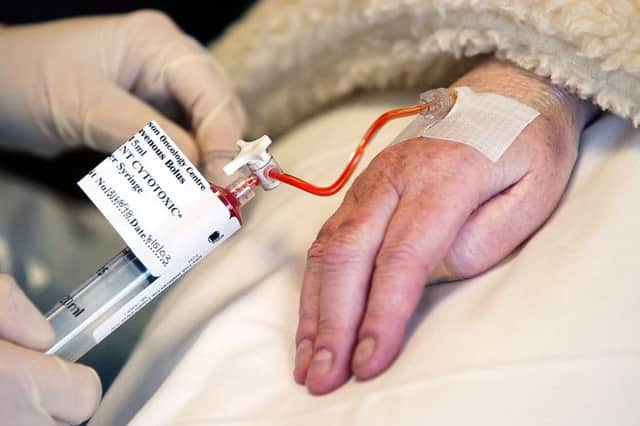Scots winning war against ‘big four’ cancers


The latest figures from Cancer Research UK show the death rate for breast cancer has dropped by a third since the early 1990s, while bowel cancer deaths are down 30 per cent.
Survival for lung cancer and prostate cancer patients has also improved, with death rates falling by 23 per cent and 11 per cent respectively.
Advertisement
Hide AdAdvertisement
Hide AdLung, bowel, breast and prostate cancers together account for almost half of all cancer deaths in the UK every year.
Research shows 160 out of every 100,000 Scots could have expected to die from one of these four cancers between 1991 and 1993, but the number had fallen to 120 by 2010-2012.
Campaigners say the figures show research has had a “powerful impact” on the fight against the disease. There has been improved detection of breast cancer through routine screening and experts have developed more specialist care and effective treatments, the charity said.
Around 1,000 people now die of the disease in Scotland each year, but that is 230 fewer than two decades ago.
Scientific breakthroughs have also resulted in fewer bowel cancer patients losing their lives, with improvements in early detection and the development of more effective treatments.
Today almost 200 fewer people a year die from bowel cancer in Scotland than 20 years ago.
It is hoped the recent introduction of bowel cancer screening will further reduce deaths by ensuring more patients are diagnosed earlier.
The improved outlook for men suffering prostate cancer has been attributed to improvements in how the disease is tackled – including surgery, hormone treatment and radiotherapy – as well as earlier diagnosis.
Advertisement
Hide AdAdvertisement
Hide AdThe link between smoking and lung cancer was revealed 60 years ago, leading to a drop in the number of smokers and an overall decline in mortality rates from the disease. However, the percentage of women dying from the disease has risen due to smoking rates coming down more slowly than in men.
Despite more Scots than ever before beating the top four cancers, the drop in death rates north of the Border is lower than for the UK as a whole.
The number of people dying across the country fell by a third in total, with the drop in men dying from prostate cancer patients – 21 per cent – almost double that seen in Scotland.
But the percentage of sufferers dying from liver, pancreatic, melanoma, oral and some digestive cancers have all increased.
Cancer Research UK spokeswoman Lisa Adams said: “While the death rate for the four biggest cancer killers falls, it’s vital to remember that we need to do more to help bring even better results over the coming years.
“There are more than 200 different forms of the disease. For some of these the advances are less impressive.”